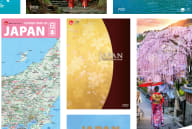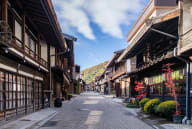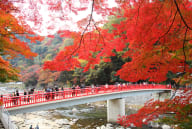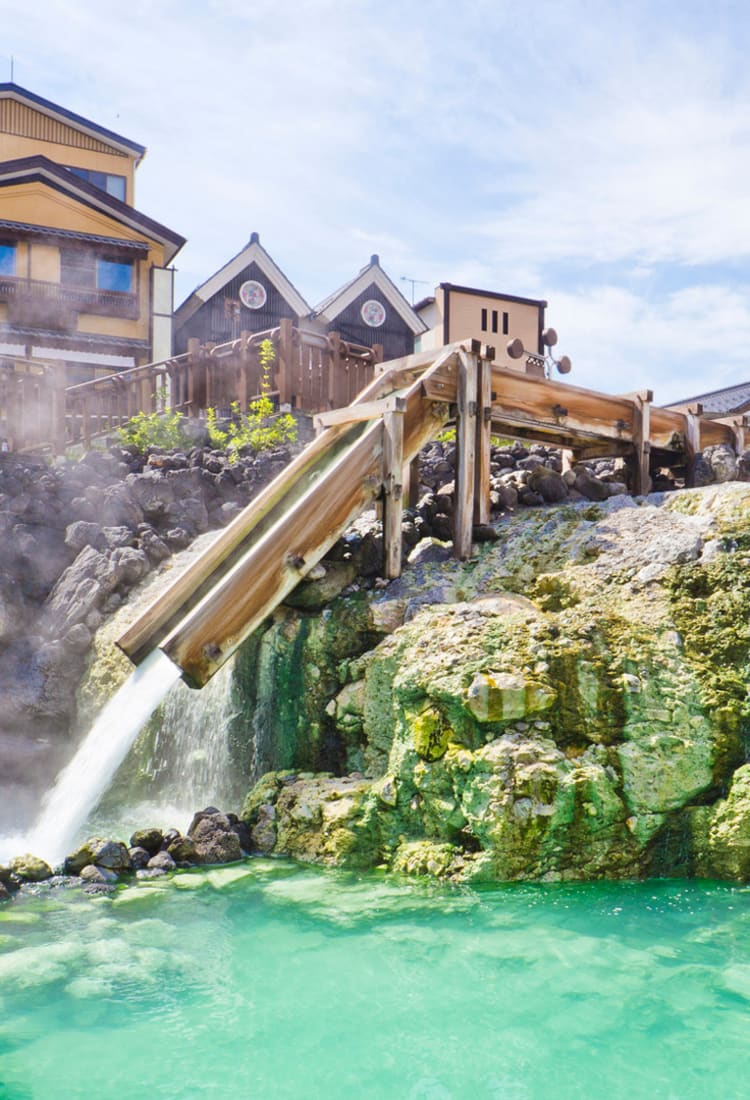
Gunma Where hot springs and hearty cuisine meet
A Culinary Journey in Gunma
Gunma Prefecture, nestled in the scenic heart of Japan's Kanto region, is celebrated for its rugged landscapes, hot springs, and rich agricultural heritage. Surrounded by mountains and blessed with fertile plains, Gunma enjoys a diverse climate that supports a wide range of crops and local specialties.
One of Gunma's culinary treasures is its premium Koshihikari rice, renowned for its tender texture and exquisite flavour, cultivated in the prefecture's fertile fields. The region's dedication to quality extends to its Wagyu beef, particularly the tender and marbled Gunma Wagyu, which is highly prized for its melt-in-your-mouth texture and rich umami flavour.
Gunma is also famous for its local delicacies such as Himokawa udon, which is very thick and chewy noodles, showcasing the prefecture's agricultural prowess and culinary creativity. Additionally, Gunma's hot springs (onsen) are renowned for their therapeutic properties and provide a relaxing backdrop to enjoy local cuisine after a day of exploration.
Discover Gunma's culinary delights and natural beauty, where each dish reflects a deep connection to the land and a commitment to excellence.
Kamameshi (Mixed rice in a pot)
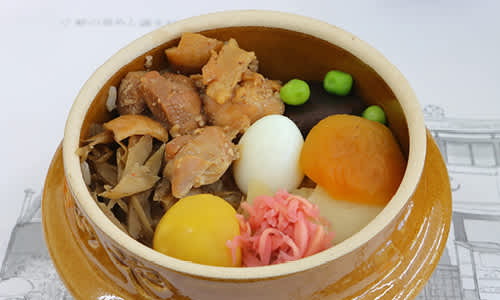
What it is (ingredients)
Kamameshi is a traditional Japanese dish from Gunma, featuring mixed rice cooked in an iron pot (kama). The dish typically includes a variety of ingredients such as chicken, seafood, mushrooms, and seasonal vegetables, all simmered together with rice in a flavourful broth made from dashi (Japanese soup stock), soy sauce, and mirin (sweet rice wine). The result is a fragrant and hearty rice dish where each grain absorbs the rich flavours of the ingredients.
History/Origin
"Toge no Kama-meshi," an ekiben (bento sold at a station) sold at Yokokawa Station's Oginoya Yokokawa Main Store since 1958, played a pivotal role in popularizing Kamameshi as Gunma's local cuisine. Served in a heat-retaining Mashiko ware pot, this bento reflects a tradition of hospitality, ensuring travellers enjoy a warm and wholesome meal on their journey. Kamameshi continues to evolve with the times, maintaining its timeless, high-quality flavour, which remains beloved by many people.
Where You Can Eat
Kamameshi can be savoured in traditional Japanese restaurants, Izakaya (Japanese style dining bar), and roadside stores or stations throughout Gunma prefecture.
When to Eat
Kamameshi is ideal for any time of year, offering a satisfying meal that warms both body and soul.
Experience the warmth of Gunma through its comforting Kamameshi, where every spoonful tells a story of local hospitality and flavourful tradition.
Yaki-manju (Roasted sweet steamed buns)

What it is (Ingredients)
Yaki-manju, or roasted sweet steamed buns, are crafted from a delicate mixture of glutinous rice flour, sugar, and water. The filling typically features sweet azuki bean paste, imparting a rich, sweet flavour that complements the bun's soft texture.
History/Origin
In Gunma, where wheat is abundant, many local dishes using wheat flour are popular. Among these, various types of "Manju" (sweet steamed bun with filling) stand out, such as carbonated Manju and soba Manju. However, perhaps the most distinctive among them is "Yaki-manju," a skewered Manju coated with sweet miso sauce and then grilled to perfection.
Where You Can Eat
Yaki-manju can be enjoyed throughout Gunma prefecture, from bustling city centres to tranquil rural areas. You'll find them at local sweet shops, street vendors, and traditional Japanese tea houses. Many families also prepare Yaki-manju at home, especially during festivals and special occasions, ensuring the tradition continues through generations.
When to Eat
Yaki-manju is a versatile treat suitable for any time of the day. They make for a perfect snack during a busy afternoon, a delightful dessert after a meal, or a comforting treat during the colder months. Traditionally, they are enjoyed during local festivals, where the aroma of roasting buns fills the air, inviting everyone to partake in this timeless delight.
Indulge in the rich history and unique flavours of Yaki-manju and savour a piece of Gunma's culinary scene.


















































